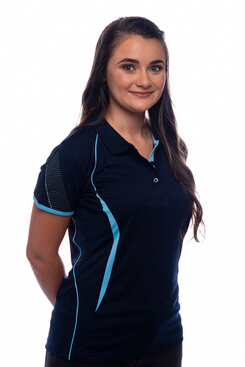Visceral Manipulation is a very gentle, hands-on treatment technique. Just like physiotherapists manipulate soft tissue like muscles, tendons, ligaments, and joints, we can manipulate and influence your internal organs too, like after you had your appendix removed. Visceral manipulation restores the normal movement of your internal organs and the connective tissue surrounding them. This is done to promote normal organ function. Organ manipulation is noninvasive, which means no scalpels or needles are used. These treatment techniques are aimed directly at your organs. No machines are used with the application of visceral manipulation.
What exactly is Visceral Manipulation?
Inflammation from infections, IBS, and a leaky gut, or trauma from accidents or surgery influence the normal movement of your organs and cause restrictions. Our organs move with us, when you turn to look over your right shoulder, your liver, gallbladder and ascending colon moves with you. Because all organs share attachments, immobility of the liver may influence your small intestine and sigmoid colon too.
Scar tissue around a trauma site hinders normal blood and nutrient flow. The natural healing process fixes whatever needs fixing as quickly as possible, with scar tissue like a glue gun that plugs all the holes. This leads to tight, immobile scar tissue that restricts the normal movement, although small, of the affected organ. The affected organ’s immobility will directly influence neighboring organs and ultimately it may influence joint mobility and muscle length. In the long run, this can lead to local issues in the area, like the gallbladder not emptying all of the bile stored inside, or global biomechanical imbalances that predispose you to injury down the line, like your sigmoid colon limiting your hip rotation and ultimately causing sciatica of the left leg.
Organ mobility can be assessed and treated with visceral manipulation by our physiotherapists.
Why do we use organ manipulation?
Visceral manipulation restores normal movement and improves the function of your internal organs. Restrictions caused by surgery, infection, injury or bedrest are manipulated so that your organs move better. Each time you turn your body to look over your right shoulder, your liver, gallbladder and ascending colon moves with you. When you have restrictions it causes compensation and may even lead to muscle and joint dysfunction.
Our bodies rely on a pressure systems for breathing and keeping our organs in place. Especially in your abdomen, this is important. The negative pressure from the thoracic cavity is responsible for breathing. This negative pressure system also keeps the liver, stomach, pancreas, and spleen, which are fairly heavy organs suspended underneath your diaphragm. If the positive pressure from the abdomen exceeds the pull from the negative pressure, your organs can be pulled down and cause pain. Increased abdominal pressure exacerbates lower back pain caused by injury to the disc.
With visceral manipulation, we can restore the interplay from the pressure systems and encourage normal movement of your organs.
Benefits of visceral manipulation
- Improve the mobility of the organs (your organs move with you)
- Improve digestive’s organ function
- Directly influence the parasympathetic nervous system
- Decrease healing time
- Improve circulation to distal areas (working on the cecum or sigmoid colon can improve circulation to the legs)
- Improve movement patterns
- Relieves constipation
- Improve breathing pattern
- Decrease pain
“The purpose of Visceral Manipulation is to recreate, harmonize and increase proprioceptive communication in the body to enhance its internal mechanism for better health.” – Jean-Pierre Barral
What causes visceral organ restrictions?
Visceral restrictions are caused by immobility. It follows the same principle of “if you don’t use it, you lose it“. If you never stand and use your legs, they will become thin and weak, ask anyone ever confined to a moon boot. Our organs continuously have to do their job, movement helps the process. Your digestive tract is a very specialized tube that digests and moves food from one end to the other. That’s why taking a walk after a meal is beneficial to digestion. Gravity assists the movement of chyme from the stomach into the duodenum while moving your body and swaying your arms from side to side aids the stomach in squeezing and moving the chyme to the duodenum. With immobility, like bed rest, inactivity and a sedentary lifestyle movement and gravity are taken away and slow the digestive process.
Chemical changes, like an infection, physical injury, poor diet, inflammation and medication influence circulation and the physiological function of your internal organs. Sometimes these influences cannot be avoided, like after surgery, but even in acute care settings getting out of bed as soon as possible is encouraged to prevent paralytic ileus, where the contractions of the smooth muscles of the digestive organs are temporarily paralyzed after surgery.
Emotional stress can influence digestive health. Scientists are only beginning to understand the link between our brain and gut and how one can influence the health of the other. Just think back if you have ever experienced constipation while traveling or heartburn when under stress. This just shows that mind and body cannot be separated.
Some problems that can benefit from Visceral Manipulation:
How was Visceral Manipulation developed?
Visceral Manipulation was developed by French Osteopath Jean-Pierre Barral. He started his career as a physiotherapist working with patients in the Lung Disease Hospital in Grenoble. He trained under Dr. Arnaud, a lung specialist, and master of dissection. He linked the postural complaints of his patients with the post mortem studies and the state of their organs. This led him to develop visceral techniques. Barral’s career has taken him to England and the USA and he was named One of the top Healing Innovators to watch in the new millennium, by Times Magazine. He has taught since 1985 and still practices today.
What happens to my cells with visceral manipulation?
Our collection of abdominal organs ensure a balanced digestion of food and an elimination of waste products. Each organ has a unique role to play in this symphony. With good circulation to the organ, it can perform in harmony with the rest.
Organ manipulation increases serotonin release. Serotonin is a hormone that plays a role in stabilizing mood and feelings of well being and happiness. It also enables the communication between the brain and other nerve cells that your impacts sleep and digestion.
The pain-relieving effects from organ manipulation occur because of increased circulation to the visceral ligaments and decreased nociceptive or pain messages relayed to the brain and nervous system.
What happens to my organs with visceral manipulation?
Just like our bodies need movement to be healthy, our organs need movement to be healthy too. Some of your organs move a little, like your liver and kidneys that move slightly up and down with your diaphragm when your breathe, and some of your organs move a lot, like your small and large intestine that moves with peristalsis to move food and lengthen when you stretch sideways or rotate. With visceral manipulation, your organs are moved, passively by your physio or active-assisted while you move with your physio. This encourages healthy movement of the organ being treated and the surrounding organs too.
Our internal organs are supported by visceral ligaments, which attach it to a bone, each other or a muscle. Visceral ligaments are richly supplied by nerves and can cause significant amounts of pain. When we release restriction from the visceral ligaments you’ll experience a decrease in your pain. Once the harmony is restored the organs can function optimally.
Our abdominal cavity is subject to two distinct pressure forces. The negative pressure from the thoracic cavity and the positive pressure from the lower abdomen. When one of these forces “win”, by pulling stronger than the other, you can suffer from a hiatus hernia or gastric prolapse. Most importantly pressure imbalances limit blood supply and lymph drainage from your organs. With organ manipulation, all of this can be restored to normal.
If you have had abdominal surgery, like an appendectomy, laparotomy, diaphragmatic or inguinal heria repair or cesearian these pressure systems are compromised. The serous fluid, which lubricates the abdominal cavity and allows the organs to glide over one another, is lost. Once the tubes of the small intestines can’t glide over one another the peristalsis can be less efficient in moving digested food from the small to the large intestine. This may feel painful a few hours after meals at the area of restriction. This may influence the stomach’s mobility, the gastroesophageal junction and the left kidney, leading to left sided shoulder or neck pain.
What does visceral manipulation feel like?
Honestly, visceral manipulation feels less impressive than it actually is. It’s a high precision technique, with minimal force. Light pressure and repetitive movement will be done in different positions, some with you lying still, or even while you move. It is comfortable, gentle movements over the target area.
Once we have your specific symptoms we do a thorough assessment of your range of movement, like we would with any other clinical evaluation. Organ mobility is assessed by your therapist’s hands on the organ, either lying on your back or sides or seated over the edge of the bed. We may add small movements, like bending backward or looking over your shoulder. Pressure is sustained in the direction of the restriction for a few breaths and repeated until no more length is gained, similar a passive stretch.
To the receiver, it may not feel like much is being done. It definitely doesn’t follow the same principle of “no pain, no gain” like other physiotherapy techniques. You have nothing to be worried about.
How long does visceral manipulation treatment take?
It varies greatly depending on the organs being treated. Visceral manipulation techniques may be included in your lower back pain treatment session and take 5 – 10 minutes or we may spend a full hour on treating your organs. Everyone’s case is unique. Our organs are more intelligent than our muscles and the treatment benefits can last weeks to months after a session.
How often do I need to get organ manipulation?
Each person’s case is unique. In general two treatments per week during the first two weeks of your rehabilitation, then one weekly treatment for the next 2 weeks should be sufficient. From there maintenance treatment once every 6 – 8 weeks can be considered. You should feel a slight difference after the first week of treatment already, we aim to build on the benefit during the next 3 weeks of your recovery.
What can I do at home to ensure I help my organs after visceral manipulation?
After your organ manipulation treatment, your physiotherapist will make specific suggestions regarding your unique case. In general, you can:
- ensure you drink enough water
- eat an easily digestible meal
- leave 5-6 hours between meals
- take a short walk after your meal
- do your home exercises, which may include deep breathing exercises and specific positioning
- sleep on your left side
Specific recommendations regarding antacids, laxatives, coffee, alcohol, and certain foods is made. You may also be referred to a nutritionist or dietician.
Cost of visceral manipulation
We charge medical aid rates. Organ manipulation will be part of your treatment plan and not done in isolation. Working on all structures affected will give you quick and lasting results.
Medical aid Code – 310
There is no specific code for visceral manipulation. Because the treatment has such a big effect on the nervous system, directly stimulating the vagus, phrenic and splenic nerves during specific techniques and the influence on the autonomic nervous system the code 310 nerve mobilization is used for visceral treatment techniques.
Does experience matter with organ manipulation?
Definitely. These techniques can not be copied from Youtube or done to yourself or your partner. Training ensures that your therapist understands the how and why and will administer organ manipulation safely during your treatment. Anatomy, physiology and anatomical pathology is at the core. Experience teaches us what feels normal or abnormal, what feels less or more tight and what causes the restriction. You are in safe hands when consulting Carli van Dyk – our physiotherapist qualified to perform these techniques.





